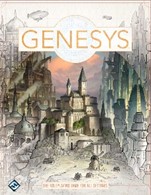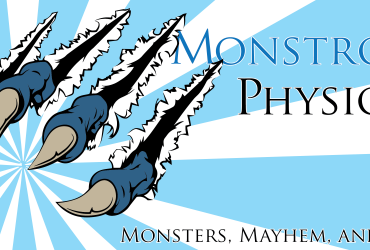I’ve been prepping to run Giantslayer for a while now, and those of you who have read it played it or listened to the Glass Cannon know how the campaign begins. For everyone else, I’m going to keep this fairly spoiler-free and only say that it begins with a bit of a mystery. Which on one hand I love but on the other, I find that mystery adventures can easily derail if the PCs miss a clue. So I’ve turned to two other roleplaying games to modify how I run the first chapter of the AP.
 First up, is Gumshoe an award-winning investigation based system that powers a number of games including Trail of Cthulhu. A principal element of its design deals directly with keeping mysteries on track. According to the Gumshoe SRD, a traditional game like Pathfinder asks, “Will the heroes get the information they need?” Gumshoe on the other-hand asks, “What will the heroes do with the information once they’ve got it?” As such the mechanics all but make the finding of clues automatic. My plan is to borrow this philosophy and focus on the narrative portions of the investigation.
First up, is Gumshoe an award-winning investigation based system that powers a number of games including Trail of Cthulhu. A principal element of its design deals directly with keeping mysteries on track. According to the Gumshoe SRD, a traditional game like Pathfinder asks, “Will the heroes get the information they need?” Gumshoe on the other-hand asks, “What will the heroes do with the information once they’ve got it?” As such the mechanics all but make the finding of clues automatic. My plan is to borrow this philosophy and focus on the narrative portions of the investigation.
Gathering clues in Gumshoe is pretty easy. The PC needs to be in the right place, have the right skill, and tell the GM how they are using it. If all of these components are aligned they get the clue. Now, that said, Pathfinder players tend to like and often expect to throw dice. I can’t say I blame them, which brings me to the next game system I’m planning to borrow from, Fantasy Flight’s Genesys system. 
Genesys is built on the same narrative dice mechanic as Fantasy Flight’s series of Star Wars RPGs. Unlike Pathfinder the Polyhedral dice Genesys uses have symbols instead of numbers. The symbols allow for the dice to resolve on two axis instead of the typical one. While most games (Pathfinder included) resolve challenges on a simple Succeed/Fail axis. Genesys’s dice mechanics allow for the Succeed/Fail axis as well as an Advantage/Threat axis. Which means simply that even though your character has succeeded it doesn’t mean something bad (sometimes barely related to the check) hasn’t also happened. Or, the reverse might be true and while your PC failed you rolled enough advantage results to narrate something good that happens to your character. Alternately, everything came up roses and you not only succeed something great has also happened…

A good example I was given the first time I played Fantasy Flight’s Star Wars is from Return of the Jedi. Lando flies the Millennium Falcon through the second Death Stars super-structure in a desperate attempt to knock out the reactor. As the route becomes tighter, Lando manages to avoid crashing (success) but not without brushing too close to a bulkhead and smashing the sensor disc off the top of the ship (threat). So much for Lando’ promise of “not a scratch.”
So what does this have to do with mysteries and clues? Well, rolling a d20 pretty much means you are only going to get single axis results which is fine. Since I’m planning to “give away” clues automatically (so long as the PCs have the right skills and are using them in the right place) I could change which axis I’m asking the die roll to resolve basically swapping Success/Fail for Advantage/Threat.
Which means I may ask the PC looking for a clue to roll normally and using the normal DC decide that a failure indicates the PC still gets the clue (per above) but something unfortunate occurs. Maybe the guilty party is passing by as the PCs uncover the clue and realizes they are close on her tail, conversely a successful roll not only reveals the clue but because the clue was so “hard” to find it impresses a nearby NPC giving the PCs a bonus on their next diplomacy check against the NPC. Or, maybe there’s an additional clue that isn’t necessary to solve the mystery but gives special insights that could help the PCs later or at least make them feel clever. For example, in addition to finding an important note behind a piece of furniture maybe they also find a few peanut shells the culprit had dropped and failed to notice while they waited. The shells are twisted open instead of cracked along the seam. Later, as the PCs close on the villain’s hideout the PCs notice more discarded shells twisted in the same way. The shells themselves only confirm what the PCs have deduced but hopefully will embolden the PCs and give them a sense of accomplishment.
As always when working on my home campaigns, I’m a huge fan of borrowing from other rules systems looking for solutions to issues I’m currently experiencing.







This sounds great! I’d be very interested in how it turns out if you want to do a follow up article on it. Also, there is the Lorefinder system that does gumshoe for pathfinder, but it restructures the rules a bit. This seems to keep everything on the GMs end.
I like this alot. Thanks for sharing!
I like that you were able to keep the skill checks, but simply change the axis. I like the FF SW system and that the mechanics often result in success/threat or failure/advantage.